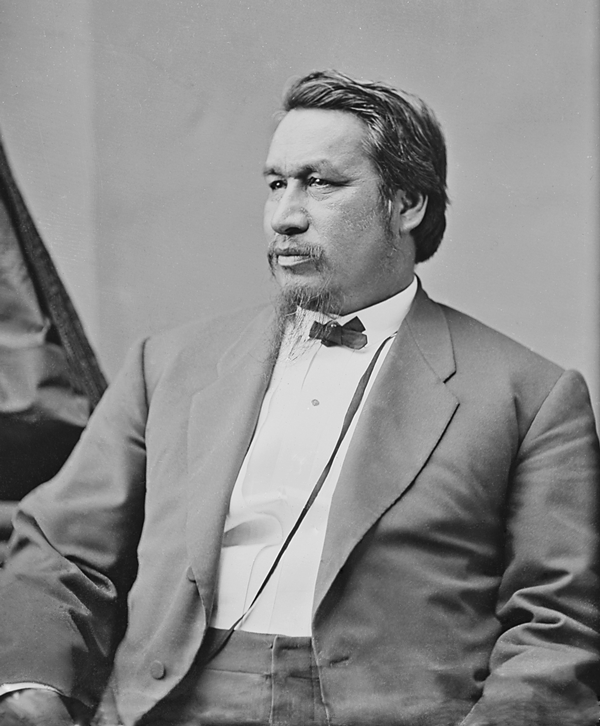Ely Samuel Parker

Born Hasanoanda on a Reservation in Indian Falls, New York, Ely Parker belonged to the Tonawanda Seneca Nation. Like so many Native American children, he was taken from his home at an early age and sent to a baptist missionary school.
Ely worked for many years at a law firm in New York where he was taught the practice of law. He was refused to take the bar exam because, as an indigenous person, he was not considered an American citizen.
In 1852 Parker was named Sachem of the Tonawanda Seneca. The Sachem is the highest level of chiefs. His name was changed to Donehogawa, "keeper of the western door of the long house of the Iroquois."
Parker would go off to Rensselaer Polytechnic Institute where he would learn Civil Engineering. It was this profession that lead Ely Parker to Galena, Illinois, where he arrived in 1858 to supervise the construction of both the Customs House / Post Office and the US Marine Hospital.
In 1861 Ely attempted to enlist in the Union army, but was refused appointments because of his heritage. He wrote to Ulysses S Grant, who had met Parker while in Galena, and Grant appointed Ely to work under John Eugene Smith, another Galena General, during the battle of Vicksburg. After Vicksburg, Parker would join Grant's staff as an adjutant.
Parker reached the rank of brevet brigadier general, and penned the terms of surrender at Appomattox Court House on April 9, 1865. Parker is the only person in American history to serve as both Sachem and General.
Parker would be appointed to lead the Bureau of Indian Affairs during Grant's presidency.
Ely Samuel Parker died in poverty on August 31, 1895, and is buried in Buffalo, New York.